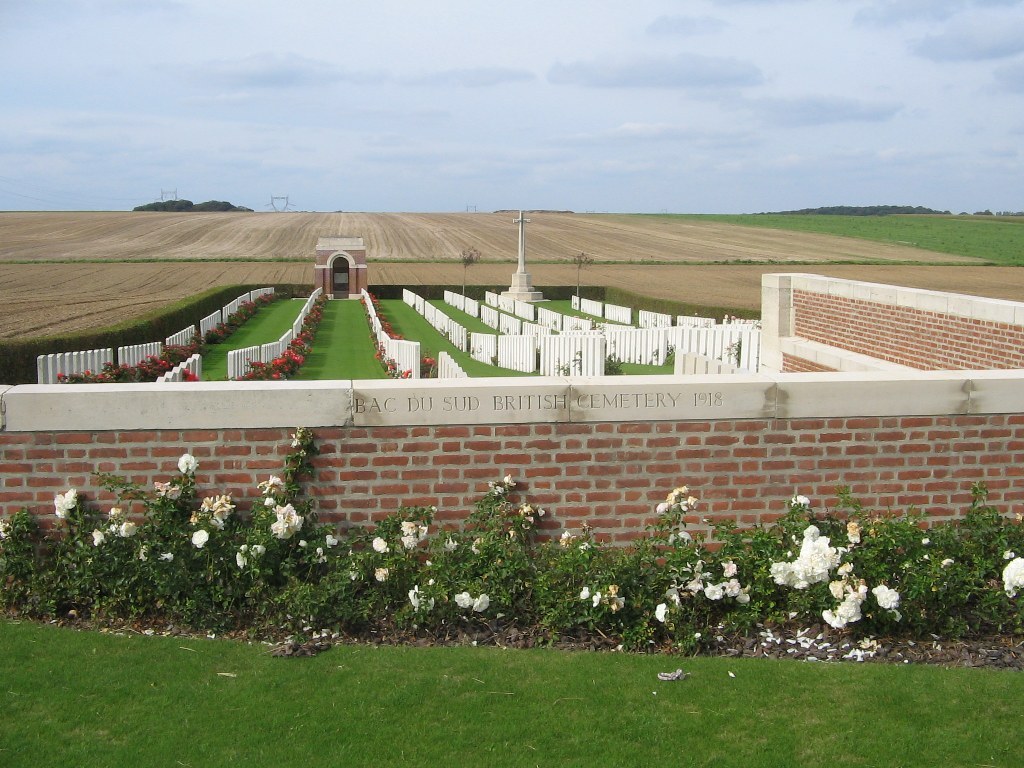George E W Pollard
Date of birth: 1878
Date of death: 03.09.1918
Area: Newton Hill, Wakefield
Regiment: King’s Own Yorkshire Light Infantry
Family information: Husband of Alice Mabel Pollard nee Taylor
Rank: 2nd Lieutenant
Service number: 200943
War Service
Shortly after war was declared George Edward West Pollard enlisted in the 2/4th King’s Own Yorkshire Light Infantry at Wakefield.
The 2/4th KOYLI experienced the front line for the first time in late February 1917 near Mailly-Maillet. At this time the German Army had started its planned withdrawal to the Hindenburg Line. For the next few weeks the 2/4th KOYLI continued with their rotational tours in the line, but were also deployed to repair railway lines damaged by the enemy.
In May 1917 187th Brigade was involved in an attack against a line of enemy trenches on the Hindenburg Line at Bullecourt. In November 1917 the 62nd Division was deployed in the Battle of Cambrai, when tanks were used in large numbers to attack alongside the infantry. 187th Brigade was involved in the fighting around Havrincourt and Bourlon village.
After his enlistment George Pollard quickly rose through the ranks to become Quartermaster Sergeant and whilst in France he was recommended for a commission. He returned to England for officer training and on its completion was gazetted to the 5th Battalion, KOYLI. Second Lieutenant Pollard returned to France in June 1918, joining the 5th Battalion in the Bucquoy area.
Shortly afterwards the 62nd Division was transferred to the Marne area, where they were involved in a counter-offensive against the enemy. By the 1st August 1918, when the 62nd Division returned to the Somme region, the 5th KOYLI had incurred 424 casualties.
On 2nd September 1918 the 5th KOYLI was in the centre of the 187th Brigade attack against the Drocourt-Queant Line, part of the Hindenburg Line. The brigade moved forward to their assembly positions around Vaulx-Vraucourt, with the 5th KOYLI assembling near the village cemetery. Prior to zero hour, at 5.30 hrs, the assembled troops were subjected to a heavy German artillery bombardment. Advancing through the enemy barrage, the battalions made good progress and Vaulx Wood was soon passed. However the attack had stalled on the left, which resulted in the battalion being subjected to enfilade fire from enemy machine guns in Vaulx Trench. This forced them to take cover in the German trench line. There was a danger that they would be cut off, as more enemy troops tried to re-occupy Vaulx Wood. However “A” Company, the support company, successfully prevented the enemy from seizing the wood and the battalion held on. Just after midnight on 3rd September the German artillery shelled the area for an hour, before they withdrew from their positions. Shortly afterwards the 5th KOYLI was relieved and returned to Behagnies, having incurred over 200 casualties.
One of these casualties was 2/Lt George Pollard, who died from his wounds on the 3rd September 1918. He was buried in the Bac-du-Sud British Cemetery in the village of Bailleuval, south-west of Arras. During August and September 1918 the cemetery was used by the 45th and 46th Casualty Clearing Stations and there are now 688 Commonwealth burials from the First World War.
Family Life
George Edward West Pollard was born in 1878, the second son of Francis and Elizabeth Pollard. His father was employed as a coachman and in 1891 the family were living at Bland Lane, Walton. On completing his education George Pollard trained as a solicitor’s clerk. In the spring of 1899 George Edward West Pollard married Alice Mabel Taylor and shortly afterwards their daughter Marjorie was born. At this time George and his family were living at The Parsonage, Walton, near Wakefield. After the birth of their son and second child in 1904, George Edward and his family moved to Woodland View, Newton Hill near Wakefield. George Edward West Pollard was now one of the Relieving Officers for the Wakefield Poor Law Union. George Pollard was also an excellent sportsman. He was a playing member of Wakefield Cricket Club and also a member of Sandal Hockey Club, from where he was selected to play for the County.
 Bac-Du-Sud British Cemetery
Bac-Du-Sud British Cemetery

